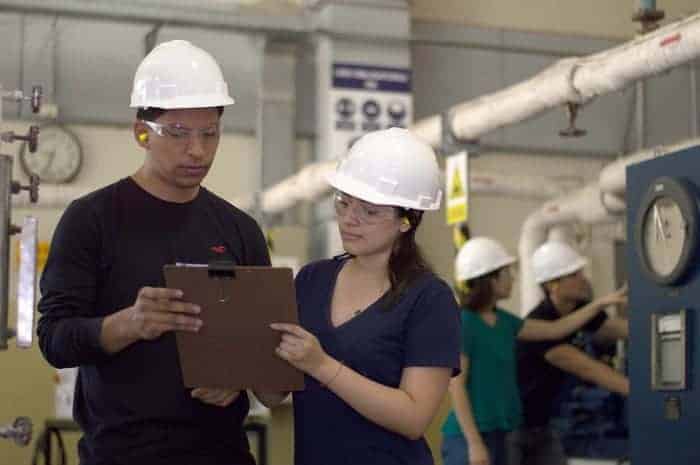Technological advancement has completely transformed everyday life. The daily routine of the average person today is barely recognizable from what it was 4 decades ago. Yet, it is in manufacturing that technology has precipitated some of the most radical process changes.
Modern manufacturing had come a long way from the early days when virtually everything was done by hand. Current and emerging technology will only continue to cause a shift in how manufacturers do business. We look at some of the ways that are happening.
1. 3D Printing
3D printing was initially viewed as a niche practice due to a lack of widespread access to the required equipment. That has since changed thanks to new software and hardware developments that have moved it beyond the walls of a prototype manufacturing company and into the hands of startups and small businesses.
One tech research firm projects that 10 percent of industrial operations will incorporate 3D printing and CNC machining service in their processes. Making it easier to print customized physical objects quickly and without the need for bulky and costly equipment, businesses can produce products and parts much closer to the point of purchase. This cuts shipping and inventory costs.
2. Internet of Things
Leading manufacturers have heavily invested in the Internet of Things, a trend that is unlikely to slow down any time soon. IoT devices are expected to see exponential growth over the coming decade. IoT makes manufacturing smarter by allowing businesses to collect huge amounts of data for analysis, decision-making, and process improvement.
A typical example of this shift is the emergence of predictive maintenance as a successor to preventative maintenance. While preventative maintenance heavily relies on scheduled checks of equipment at defined intervals, predictive maintenance banks on real-time data captured and relayed by IoT devices to show the exact time maintenance is needed. This increases accuracy and efficiency while reducing overall maintenance costs.
3. Machine Learning
While IoT has been a great development for manufacturing, it has also introduced a new problem: massive data. Each IoT device can capture hundreds or thousands of data points per day. A person can’t go through this data each day and interpret it for decision-making.
Machine learning allows manufacturers to analyze the vast data captured by factory sensors and convert it into useful, actionable insights for workers and managers. Machine learning software aggregates and simplifies the data in a way that a non-technical worker can understand.
IoT is of course just one example where machine learning is increasingly being applied. Other areas include quality control, production yields, demand forecasting, and price optimization.
4. Robotics
Robots have long made their mark in manufacturing, and this will only continue to grow. From 2000 to 2010, more than 5 million manufacturing jobs in America were lost. Whereas China is often perceived as the reason for the drop in manufacturing jobs, it’s robots and automation that are most to blame. 17 of every 20 manufacturing jobs lost was as a result of automation.
This is evident from the fact that despite the huge number of jobs wiped out, manufacturing output is actually growing in real value and at a lower cost. A PwC survey showed 60 percent of manufacturers are using robots in some way.
While robots were previously used for complex projects and in isolated circumstances, technological advances have ensured they have become smarter, more cooperative, and independent. It’s difficult not to envisage a future where robots aren’t playing an even greater manufacturing role than they do today.
5. Factory and Product Apps
Smartphones have changed the way we communicate. Increasingly built like mini-computers, smartphones have combined traditional phone uses such as calling and SMS with newer functions like browsing the web. They proved useful for consumers but are now becoming a useful tool for manufacturers.
Many manufacturers have developed custom apps for their products to improve customer experience and value from their products. There are also smartphone apps built for the manufacturing industry to improve factory floor efficiency. Examples include the Manufacturing 360 app by Siemens, Manufacturing MRP app, Efficiency Energy Audit Checklist app, and Internal Quality Audit Report app.
6. Social Media
In years past, many manufacturers had little to no contact with the end-users of their products. If you had a problem with something you had bought, you went to the retailer, dealer, or local store you purchased the item from. They would attempt to resolve the issue and, if not, get in touch with the manufacturer on the customer’s behalf.
With the emergence of social media platforms such as Facebook, Instagram, and Twitter, the gap between manufacturers and end-users has been narrowed drastically. End users are no longer limited to only consulting their local retailer or dealer. They can get in touch with the manufacturer directly through their social media pages.
Social media has also created a convenient channel for manufacturers to get first-hand feedback from customers.
It is evident that manufacturing is changing and a big part of that change is and will be driven by technology.



Social Media has put a face on the consumer that companies cannot ignore and hope they go away. Nothing is worse than an irate customer gone wild on social media.
Today’s businesses need to get ahead of the game and be social media aware and involved.